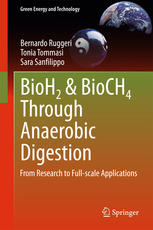

Most ebook files are in PDF format, so you can easily read them using various software such as Foxit Reader or directly on the Google Chrome browser.
Some ebook files are released by publishers in other formats such as .awz, .mobi, .epub, .fb2, etc. You may need to install specific software to read these formats on mobile/PC, such as Calibre.
Please read the tutorial at this link: https://ebookbell.com/faq
We offer FREE conversion to the popular formats you request; however, this may take some time. Therefore, right after payment, please email us, and we will try to provide the service as quickly as possible.
For some exceptional file formats or broken links (if any), please refrain from opening any disputes. Instead, email us first, and we will try to assist within a maximum of 6 hours.
EbookBell Team

4.0
86 reviewsThis book presents a Two-Stage Anaerobic Digestion (TSAD) technique for producing hydrogen and methane, following a step-by-step approach in order to guide readers through the experimental verification of the related hypothesis. In the first stage of AD, the reaction conditions are optimized to obtain the maximum amount of hydrogen, while in the second the liquid residue from the first phase is used as a substrate to produce fuel-methane. AD has traditionally been used to reduce the organic content of waste; this results in a biogas that is primarily constituted of CH4 and CO2. Over the last few decades, the conversion of organic matter into hydrogen by means of AD and selecting Hydrogen Producing Bacteria (HPB) has matured into a viable and sustainable technology among the pallet of H2 generation technologies. The combined bio-production of hydrogen and methane from Organic Waste Materials (OWM) is considered to be an ideal way of utilizing waste, and can increase energy efficiency (the substrate Heat Value converted into H2 and CH4 fuel) to roughly 80%, since the energy efficiency of H2-production alone (15%) is not energetically competitive. The two gas streams can be used either separately or in combination (Hytane®), be supplied as civilian gas or used for transportation purposes. All the aspects of this sustainable technology are taken into account, from the basic biochemical implications to engineering aspects, establishing the design criteria and the scale-up procedures for full-scale application. The sustainability of the TSAD method is assessed by applying EROI (Energy Return On Investment) and EPT (Energy Payback Time) criteria, and both the general approach and application to the field of Anaerobic Digestion are illustrated.